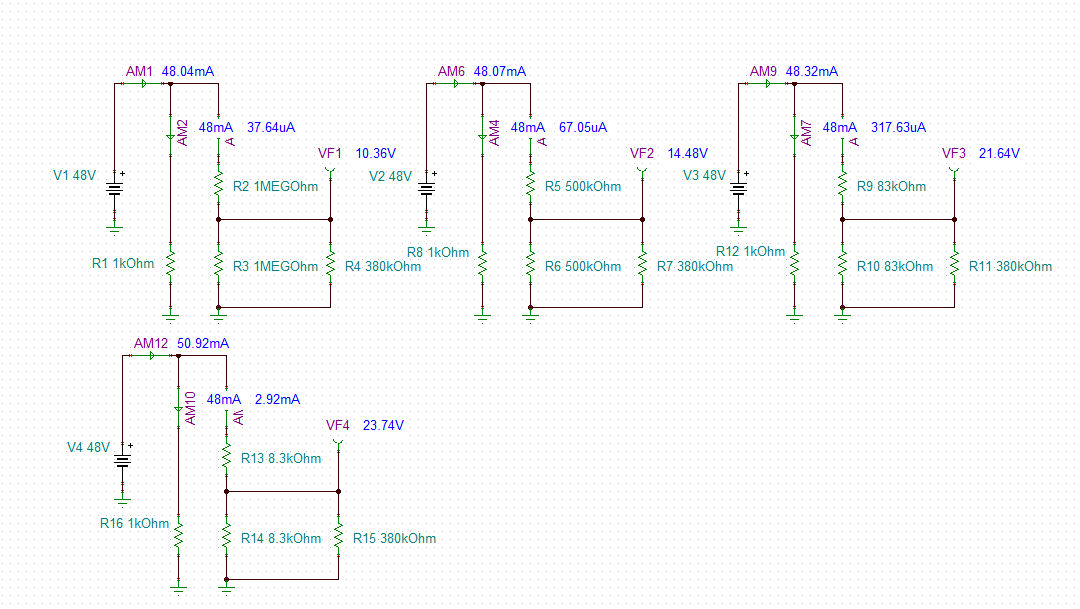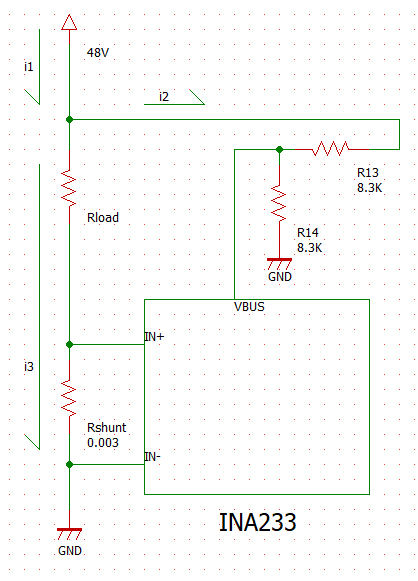I'd like to use the INA233 to monitor the current and voltage of 48V motor. I understand that the maximum voltage input on the VBUS pin is 36V.
My intention is to add a voltage divider to reduce the input by a factor of 2, such that VBUS will be at a maximum of 24V for my full scale (48V) input. I can see that this will impact the INA233's power calculations, though for my application I am only interested in voltage and current measurements and I can correct the voltage measurement in software to account for the voltage divider.
Does this seem like a valid approach or could there be some other factors that need consideration?



